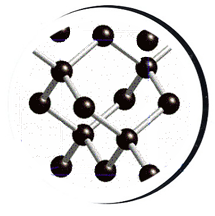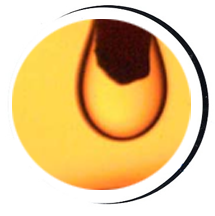

Affiliated Centers, Institutes, and Facilities
| Theoretical Condensed Matter Faculty | |
|---|---|
| Kieron Burke | Density functional theory, machine learning, warm dense matter, mathematical physics |
| Alexander Chernyshev | Strongly correlated electronic systems and quantum magnetism |
| Judit Romhanyi | Frustrated magnetism, topological phases of matter, multiferroic materials |
| Thomas Scaffidi | Quantum chaos, electron hydrodynamics, topology and criticality, quantum computing, superconductivity |
| Steven White | Density matrix renormalization group; high temperature superconductivity; quantum chemistry |
| Ruqian Wu | Density functional theory, topology, magnetism, spintronics, catalysis |
| Clare Yu | Glasses and amorphous systems, sources of noise and decoherence in quantum computing |
| Igor Dzyaloshinskii (Emeritus) | Time-parity violation in magneto-optics. Fermi liquid and non-Fermi liquid behavior.. |
| Alexei Maradudin (Emeritus) | Photonic band structures, optical interactions at surfaces, linear and nonlinear surface excitations. |
| Experimental Condensed Matter Faculty | |
|---|---|
| Philip Collins | Single-molecule electronics, sensing, and single-molecule biophysics |
| Michael Dennin | Emergent properties of complex fluids, foam, sand. dynamics of biological systems. |
| Wilson Ho | Quantum phenomena in space and time, nano-cavity quantum electrodynamics |
| Luis A. Jauregui | Quantum transport, topological 2D quantum materials, exciton dynamics, quantum simulators |
| Ilya Krivorotov | Spintronics and magnonics in nanostructures |
| Huolin Xin | Electron imaging and scattering, artificial intelligence, lithium-ion batteries, fuel cells, novel-phase 2D materials |
| Howard (Ho Wai) Lee | Nano-optics/devices, ultrafast optics, metamaterials, plasmonics, active optical materials, quantum/bio-photonics |
| Xiaoqing Pan | Transmission electron microscopy, photovoltaics, ferroelectrics, catalysis, lithium-ion batteries. |
| Javier Sanchez-Yamagishi | Electronic phenomena in 2D quantum materials, graphene, quantum sensors, nanofabrication |
| Zuzanna Siwy | Nanotechnology, biological physics, biomimetic nanoporous structures and sensors |
| Peter Taborek | Phase transitions at surfaces, wetting and spreading, fluid mechanics |
| Jing Xia | Topologically ordered materials and topological quantum computing |
| Zachary Fisk (Emeritus) | Strongly correlated electron systems, heavy fermion physics, kondo insulators, hexaborides |
| Herbert Hopster (Emeritus) | |
| Jon Lawrence (Emeritus) | |
| William Parker (Emeritus) | Superconductivity, low temperature physics, fundamental physical constants, physics education |
| James Rutledge (Emeritus) | |
Condensed matter physics is the study of physical phenomena in solids and liquids. In the past, work by condensed matter physicists led to many of the most important technologies of today, such as transistors, lasers, semiconductor technology, LEDs, solar photovoltaics, MRIs, magnetic hard drives, etc. Today, condensed matter physics focuses on new types of materials and phenomena, including exotic quantum phenomena such as superconductivity and superfluidity, some of which may become the leading technologies of the future.
UC Irvine has a large condensed matter physics group of both experimentalists and theorists, with many students, postdocs, and visitors, and an active seminar program. Much of this group works on what one might call quantum materials--materials exhibiting exotic behavior because of the effect of quantum mechanics. This include high temperature superconductivity, superfluids, quantum spin liquids, frustrated magnetic systems, quantum Hall systems, topological insulators, and topological quantum computing. Experimentalists in this area both create new materials and devices, and use a variety of experimental probes to understand their properties in a detailed microscopic way. Experimental progress on these systems is tied to theoretical progress. The central problem of condensed matter theory is simple to state: how do macroscopic phenomena arise from the microscopic laws of nature? Remarkably, this simple to state problem gives rise to a host of possible phases of matter, only some of which have been discovered in materials so far. Theorists in the group use both pencil and paper, and computer simulations, to study condensed matter systems.
Condensed matter physics is a broad field, and in addition to quantum materials, members of the group work on nanoscale physics, including the properties of single molecules on surfaces, or graphene, on nanotubes and nanopores, on spintronics, and on "soft condensed matter", including the fluid dynamics of superfluids, and the dynamics of soap bubbles films.
8.14.2023
